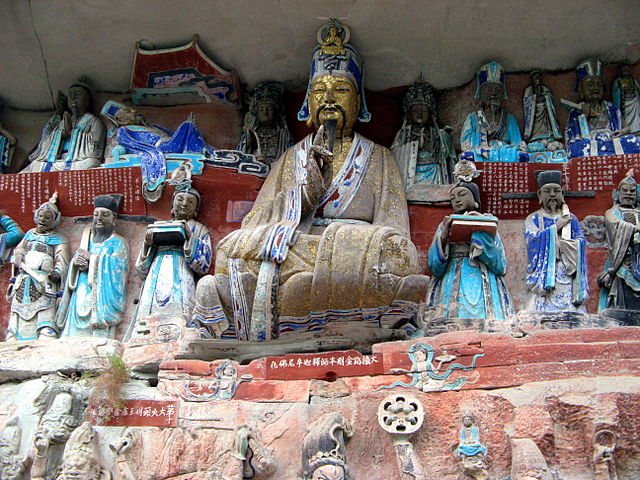
The Ten Austerities Of Liu Benzun
Scene 22, Baodingshan, Dazu (map)

|
The Ten Austerities Of Liu BenzunScene 22, Baodingshan, Dazu (map) |
Liu Benzun, who lived 300 years before Zhao Zhifeng, was Zhao's spiritual ideal and inspiration. Liu's deliberate damaging of his own body is shown in this relief. Liu is the large central figure in the photo, and his austerities (acts of harming himself) are shown to either side upon the upper ledge.
Asceticism, also known as penance, austerity, and "mortification of the flesh," has deep roots in India, Christianity, and many Native religions. The practice aims to achieve a spiritual state by sacrificing one's physical being; physical and sensory deprivation or pain can, under favorable circumstances, lead the prepared mind to a realm of religious and visionary experiences that seem compelling to the practitioner. Although rejected by the historical Buddha (who advocated a Middle Way after earlier austerities), asceticism was incorporated into early Chan (Zen):
| The Second Patriarch, who had been stanidng in the snow, cut off his arm and said [to Bodhidharma], "Your disciple's mind is not yet at peace. I beg you, my teacher, please give it peace." (Mumonkan, #41.) |
There is no evidence that Zhao himself practiced self-harm, but the theoretical importance of asceticism to Zhao is attested by his epigram quoted earlier:
|
Even if one spins a burning hot iron wheel on top of my head,
|
Liu's Ten Austerities are: Burning the Index Finger, Burning the Ankle, Cutting the Ear, Burning the Top of the Head, Burning the Genitalia, Burning the Knees, Cutting the Arm, Burning the Chest, Gouging the Eye, and Meditating in the Snow. A representative selection of these acts is shown in the following pages.

|

|

|